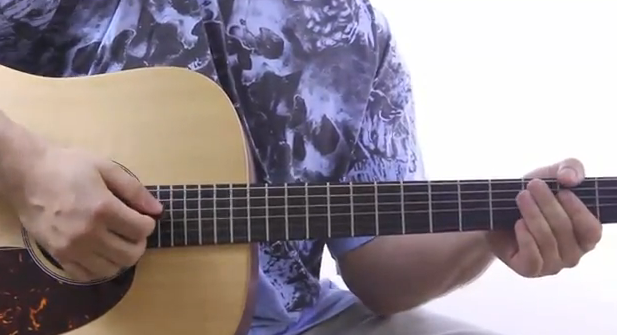Hey,
Check out these beginner blues lessons!
Blues Chords Guitar Lesson
Hi. I’m Claude Johnson from guitarcontrol.com. How’s it going?
Today we’re going to talk about blues guitar, beginner blues guitar.
If you have a lot of experience all ready, please checkout some of
our other videos. We’ve got a lot of great stuff on our channel.
Also, you can checkout either guitarcontrol.com or howtoplayblues.com.
This new series, we’re just going to get into some real basics with
blues guitar, starting with this video and we’re just going to go over
the basic chords. I’m going to try to stay away from the theory and
just give you just what you need to know.
If you want to play blues the first three chords you should probably
learn are E7, A7 and B7. If you notice, all those end in the letter
7, so they’re known as what’s called 7th chords or dominant 7 chords.
The main difference, again, I’m not going to really go into the theory,
but they’re basically four-note chords as opposed to your ordinary major
and minor chords, which are also called triads and have three notes.
For example, let’s just listen to the difference between the E major
and E7. So here’s E major. It’s a three-note chord. Now even though
I’m strumming all six strings, you’re getting some repeats in there.
You’re getting an E on the bottom, the B, an E again and then G sharp,
then you’re repeating the B again and then one more E. So it’s just
really E, G sharp and B gives you that sound.
Now E7, if you hear that, it has a richer, more complex sound. Here
we’re playing the E, B and instead of the E again, we’re playing a D.
That’s what gives it that complex kind of sound. All I’m doing here is
putting my middle finger on the 2nd fret of the A string and my first
finger on the 1st fret of the G string and I’m just playing all six
strings. That’s your E7.
The next chord is your A7. Again, we can listen to the difference
between A major and A7. Hopefully you’ll hear that difference.
For this one I’m putting my middle finger on the 2nd fret D string,
ring finger on the 2nd fret of the B string and I’m strumming five
strings, not playing the low E, but just playing…
B7, I’m going to be putting my middle finger on the 2nd fret of the A
string, first finger on the 1st fret of the D string and then ring finger
on the 2nd fret of the G string. I’ll just play the middle four strings.
These are the three chords that you would need to play a blues in the
key of E. Depending on what key you’re in, you’ll need some different
chords. You don’t always have to use dominant 7 chords. You can play
a blues with major chords, minor chords, anything you want, but the
classic blues sound, the most common and the most bluesy is going to
be those 7th chords or dominant 7th chords.
Again, please learn your E7, A7 and B7 and we’ll use them in that
next video. If you’re really into blues and you just want to go
right to a great course to learn all this stuff, instead of just
watching random YouTube videos, check out my course at
howtoplayblues.com. I think you’ll really love it.
That’s all for now. We’ll catch you next time.




